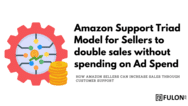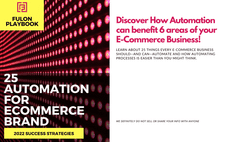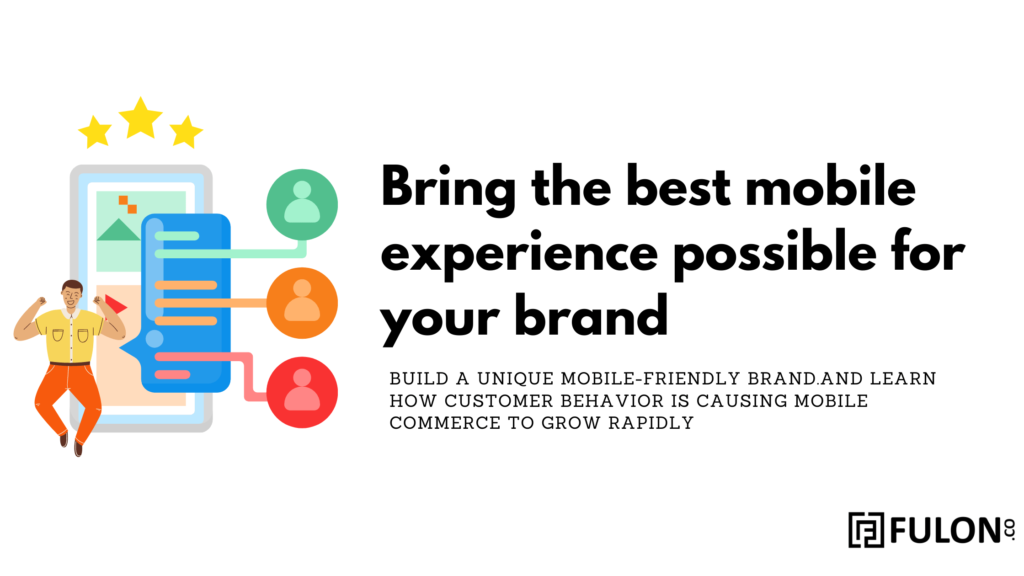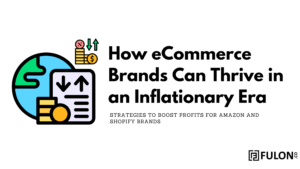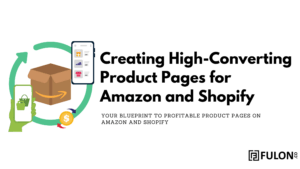Table of Contents
Post-Pandemic Mobile Experience
While we were all self-quarantined at home, the only channel available was mobile. Because of COVID, we now conduct all of our activities—including socializing, leisure time for work, gaming, and, of course, shopping—on mobile phone screens.
Stats and facts
- This is consistent with the app market statistics from 2020, which show that the number of apps installed has risen to a record-breaking 218 billion.
- The same holds true for the 243 billion dollars in consumer spending on apps. Consumers used mobile apps last year for 3.5 trillion minutes, exclusively on Android devices.
- Additionally, more time is being spent on mobile devices than watching television. The average American spends four hours per day on their mobile devices compared to three hours per day watching TV. And it is precisely the attention share that all marketers are striving for by designing a fully mobile experience for their companies.
The impact of e-commerce is considerably more pronounced and well-supported. Global e-commerce sales reached $26.7 trillion in 2020, accounting for over 20% of all retail sales worldwide.
For instance, research reveals that brands’ online income increased by 47% in 2021 compared to the previous year during mother’s day purchasing. The psychology of consumers has also changed, and this is obvious. For instance, in a study conducted during the COVID outbreak, 50% of US citizens indicated that they preferred to purchase for the holidays online. Additionally, 30% of respondents said they would prefer to use an app.
This highlights how consumers are changing in terms of how they think, act, engage with brands, and ultimately decide whether or not to buy something.
There is a claim that physical stores are safer to shop at since more individuals are being immunized. Would this have a detrimental effect on the mobile app and mobile e-commerce industries?
These things could change the rules, lessen their severity, and increase consumer safety when buying. But some things will undoubtedly change such as:
- The first is that people will not overnight unlearn the behaviors they have developed during such a trying time. Therefore, it is likely that the current trend in mobile commerce will continue.
- The alteration in behavior led to a proliferation of brands and businesses becoming mobile by developing their own applications, platforms, etc.
- The competition will therefore likely continue with us into the post-COVID future. And for brands to stand out, going genuinely mobile would require a distinct, original concept.
Fulon’s MEQ™ (Mobile Experience Quadrant™) to build everyday mobile marketing strategy

Quadrant 1 - Interactive engagement
Today, mobile devices are used for indoor shopping. Experience over all else should therefore be the foundation of everything we do. An e-commerce app’s features are already limited by its fragmented screen. There are many options to choose from, such as banners, cards, in-app messaging, and carousels, but the customers are experiencing choice paralysis due to the abundance of options they see. This is the reason why immersive experience is important and where it enters the picture.
When we talk about an interactive engagement, we mean one that is able to hold the user’s attention without any interruptions from the screen, draw them directly into the discovery of the product, and draw them into the experience with the value proposition, which will ultimately lead to the desired action, which is a purchase. The success or failure of this user’s second visit, second product discovery path, and eventual repeat purchase will all depend on the effectiveness of this user experience.
L’Oreal is a fantastic illustration of that. Consequently, Modiface, a technological business, was purchased by L’Oreal. Together, they created an interactive engagement that is especially suited for mobile. In 2018, L’Oreal released the style my hair augmented reality app, which gave users a 3D and accurate view of how various colors will appear on their hair.

Quadrant 2 - Hyper-Personalised Experience
Making it as personal as feasible would go beyond the seamless, interactive engagement. This brings us to the second pillar of our foundation, which is creative personalisation. Personalization, intelligence, and emotional appeal are necessary for brands. Personalized product offerings are a known truth. Dynamic pricing suggestions and fully customized web experiences can have a significant impact on income. Because of this, brands have been engaging in it to some extent since the inception of retail.
The imprint of your users is increasingly evident in today’s totally mobile environment, and you have access to a wealth of data that you can utilise to tailor and personalise your users’ experiences. However, this indicates that your major rival’s main opponent is also engaging in the same activity. Finding even a small point of differentiation is therefore essential for being wise in this situation. This is the reason why it is called as creative personalisation.
The offer can be customised so that customers receive personalised recommendations that measurable increase client loyalty and help the business develop. An approach that is focused on the needs of the consumer increases customer loyalty, which raises retention. Spotify is something we can all learn from and be inspired by. With the introduction of its new customised experience, Spotify recently debuted its take on wrapped in the media. In a format that can be shared, just like your music, the function provides details about your music history.

You may not even be aware of these things yourself. In order to learn more about yourself and your experience using Spotify, you should just delve into the information as you become intrigued as a user. As a user, this undoubtedly makes you happy and makes you feel like a devoted member of the Spotify brand community. This is unquestionably the best example of personalisation to date for that reason.
Consumers are constantly searching for an experience rather than a singular encounter.
These could be ploys that encourage people to use your platform repeatedly through apps that are highly personalised and powered by technology because they feel like they are a part of your community. When we talk about maximising the effectiveness of personalization initiatives, this should be the second important point to make. The beauty industry, as a sector that is heavily involved in and fiercely competitive when it comes to customisation, must also be mentioned when discussing best practices and personalization.
One illustration would be the Neutrogena mask concept, which is customised to your skin needs based on information gathered from a selfie. By taking a selfie with a smartphone’s 3D camera, the user can produce an accurate map of your face with its precise measurements and distinctive physical features. The user’s skin needs are then virtually assessed by a skilled dermatologist using tailored data from the system.
Finally, a personalised pit mask is created utilising a 3D printing procedure and the appropriate materials. According to Neutrogena, each mask is as unique as the women who wear it.
Similar to La Roche-Posay’s creative strategy, they created the first changeable sensor that detects the pH levels of your skin. It’s a stick-on patch that monitors the pH levels of the skin and recommends specific items via a mobile app. You might be wondering where this is all headed and what the maximum amount of customization that is possible is now.
One thing we’re noticing is that you might use personalisation as part of your overall business plan or even as your business model. Stitch Fix is a fantastic example of that. Every month, Stitch Fix delivers you a package filled with garments customised specifically for you.

By compiling information on the fundamental components of your style-defining products and distilling it into an algorithm. Stitch Fix aims to send each user’s personalised recommendations right to their doorstep, making seamless and intelligent customisation an absolute must for your approach.
Quadrant 3 - Communication Experience
Making ensuring that your customers feel understood by you is an essential foundation. Shopping is, however, also a social activity that will flourish if a constant communication channel is available. This leads us to the third pillar of our framework: maintaining an ongoing dialogue loop and keeping consumers interested through interaction.
It’s important to clarify that the consumer relationship with a brand should no longer be viewed through the traditional funnel, where the relationship ends with the transaction. It is a continuous cycle of communication, contact, and consideration, and being in that cycle is a conscious choice. Keeping the conversation going while attempting to accomplish that at this stage is crucial.
The first is that client feedback is the most valuable thing you can obtain from them. You must therefore make sure that book is open at all times. Your clients must feel that their opinions are valued and that the experiences are customised in response to their comments. Therefore, you should not show them the product that they have just returned or to which they have provided bad feedback in order to obtain that feedback; instead, you should create an experience for them in order to obtain that feedback.
The dated popups and enact messages invite visitors to score how obtrusive and out-of-date they found their experiences to be. For example, as an idea, you can use app stories to accomplish that. You might as well use an emoji rate bar to ask your users about their impressions of the app on a scale of one to ten. It’s an interaction that consumers are accustomed to having on social media, and they will be aware that once they have responded, they will also see the typical response that the community has offered, adding credibility to your business.
You may also come up with other ideas to set your experience apart from others and give them a good reason to return to Apple frequently. Make it fun for them by include data trivia, enticing quizzes, and intriguing polls. It’s important to highlight that the user isn’t using the app solely to make a purchase. They go there to people-watch, unwind, and tell their buddies about their experiences.
You should consider clever ways to ensure that the content on your app is also interacted with and share about how to make a common shopping list that can be done among the users of your community. As you are aware, Spotify has a feature called blend that enables you to create a playlist by collaborating with other Spotify users.

Check out this blog and find out the best practices for turning your company into a customer-centric brand.
Quadrant 4 - Community Experience
You need to create a feeling of unity. The secret is to integrate brand evangelists, key opinion leaders, influencers, or celebrities into your app and use their relevance to invigorate the community. One company that was particularly positioned to try during the pandemic isolation was peloton. Why do you need this for one to develop a sense of identity and to second to empower the relationship between your consumers. Peloton is no longer only about a product or a membership, it is about the collective experience of a group of people.

Identify ways to keep visitors coming back to the visual community they have established. It is impossible to talk about distinct boundaries between various verticals in the world of today. Social media platforms are continually enhancing their capacity to participate in the product discovery process. Mobile commerce apps, on the other hand, are beginning to behave more and more like social networks. There are numerous things that can be learned from one another.
Summary
In new Post-Pandemic economy, mobile is the main channel to experience:
- Engagement
- Socialisation
- Business
- Entertainments
- Shopping
All those shopping behaviours are here to stay. So dive into Fulon’s MEQTM (Mobile Experience QuadrantTM ) to create a unique mobile-friendly brand.

